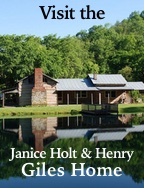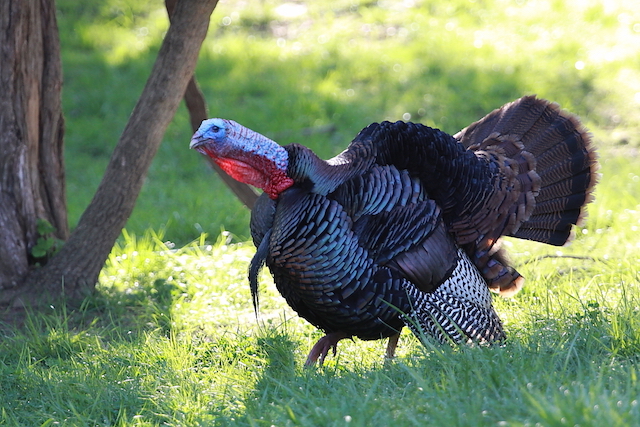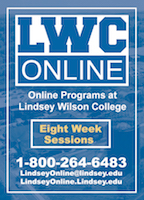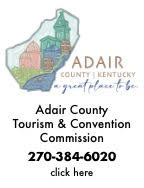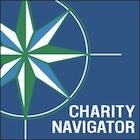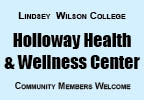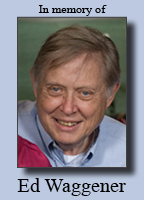| ||||||||||
Dr. Ronald P. Rogers CHIROPRACTOR Support for your body's natural healing capabilities 270-384-5554 Click here for details 


Columbia Gas Dept. GAS LEAK or GAS SMELL Contact Numbers 24 hrs/ 365 days 270-384-2006 or 9-1-1 Call before you dig Visit ColumbiaMagazine's Directory of Churches Addresses, times, phone numbers and more for churches in Adair County Find Great Stuff in ColumbiaMagazine's Classified Ads Antiques, Help Wanted, Autos, Real Estate, Legal Notices, More... 
|
KY Afield Outdoors: Five questions with Zak Danks Danks is the new Ruffed Grouse and Wild Turkey Program Coordinator By Kevin Kelly Frankfort, KY - Zak Danks was homesick and uncertain about what career path he wanted to pursue after his freshman year at the University of Kentucky. The picture soon came into focus through his involvement with his local National Wild Turkey Federation (NWTF) chapter and after meeting a wildlife biologist employed by the Kentucky Department of Fish and Wildlife Resources. The Logan County native changed his major and vigorously pursued a career as a wildlife biologist. His educational background and real-world experience laid the groundwork for him to take a new role with Kentucky Department of Fish and Wildlife earlier this year. Danks now heads the Ruffed Grouse and Wild Turkey programs as a wildlife coordinator with the department. Prior to that, he spent five years as the eastern Kentucky liaison between Kentucky Fish and Wildlife and the U.S. Department of Agriculture's Natural Resources Conservation Service (NRCS) promoting land conservation and habitat improvement on private lands through federal Farm Bill programs. He also previously worked as a Farm Bill biologist and private lands biologist. Much of his focus since starting his new job has been on developing a long-range plan to restore the ruffed grouse population in Kentucky. A draft of the "Ruffed Grouse and Young Forest Initiative" is available for public review and comment on the department's website at fw.ky.gov through Friday, July 8. Danks, 34, recently sat down to discuss his new role and the plan. Q: How has your previous experience helped prepare you for this new chapter in your career? Danks: "My previous work has been totally about cooperative partnerships, especially with private landowners. They're the hardest group to influence because they are motivated by many different factors. Understanding them, working with them, helping them. All those things are truly important. That said, we've got to work on public lands as well, and that means partnering with other agencies. Grouse management is going to be very difficult. If we don't get the word out, we're just going to keep doing what we've been doing, which is not enough." Q: How did we get to the point that something needs to be done for grouse in Kentucky? Danks: Grouse populations in Appalachia have the ability to survive at low levels even when the forest is older and there's not a lot of prime grouse habitat. That's a good thing. They're persistent. They're probably locally abundant in places that happen to have quite a bit of proper-age cover, but there's not that much of it. We know from U.S. Forest Service inventory data that there is just a declining amount of young forest cover overall, but we also know that certain little pockets of suitable cover probably exist. We get reports of hunters having good luck. What's going to be critical moving forward is you've got this public perception of what is the grouse population. That's difficult to say. Over all of east Kentucky, how in the world do we come up with a population figure? What is comprehensible are these local populations. That's sort of what we're getting at with our hope to take a focal area approach. On a smaller scale we can target work, hope to see a local grouse response and then build on that and get surrounding private landowners to manage their forest in a way that's beneficial for grouse and hopefully have bigger impacts." Q: In your opinion, what makes the ruffed grouse special or unique? Danks: "Grouse are extremely challenging to hunt. The elusiveness, the fact that they inhabit the thickest, nastiest cover; it's not for the faint of heart. It's physically demanding. That's part of what makes it special. As a biologist, what makes it special is its close tie to habitat. Grouse, they exist and can persist in that eastern forest just as they would have historically. They exploited and depended on young forest that would have been created by Native Americans or natural disturbances. But those habitats that they exploit are so ephemeral in nature. Fast forward the past century when we cut the forest, it re-grew and grouse were abundant. Their numbers have declined because the forest has aged. It's clear what the problem is, but the challenges associated with managing it are real." Q: As a graduate student at the State University of New York's (S.U.N.Y) College of Environmental Science and Forestry at Syracuse, you studied moose in Maine. What parallels can be drawn between moose and grouse and how both utilize the forest? Danks: "Moose and their habitat needs being similar to the kinds of things I'm working with now with grouse really helped me to see the importance of forest management as a tool for wildlife management. Moose eat a lot and there's a lot of forage in cut-over forest stands. That regenerating forest provides a lot of food. That kind of tie-in there to forest management opened my eyes because there's another species up there - the New England cottontail - that has reached critical status. They depend on the same kind of habitat. I went on my first grouse and woodcock hunts up there. So, I began to see the tie and the specific value of young forest habitat in addition to older growth. What people may not realize or fail to think about is what food is available for wildlife. Yes, big trees make acorns or beech nuts, but in some cases that may be all. That's a periodic resource. You need cover and a lot of times in those older forests there's not a lot of cover, not a lot of forage." Q: What would it mean to you to see this plan succeed? Danks: "It will be extremely rewarding, no doubt. The thing about grouse, it's going to take time. The first 10 years is just getting your foot in the door. True success is decades down the road. If we are able to make headway, we most certainly would make headway for a lot of other species. I talk about that in the plan and I'm dead serious about it. What helped cement my decision when I decided to go for this job was the potential to help other animals as well - from deer and turkey to non-game species. We'll need a lot of support from the public, knowing and believing and hopefully realizing grouse management would be good for other species." Author Kevin Kelly is a staff writer for Kentucky Afield magazine, the official publication of the Kentucky Department of Fish and Wildlife Resources. Get the latest from Kevin and the entire Kentucky Afield staff by following them on Twitter: @kyafield. This story was posted on 2016-07-07 15:11:37
Printable: this page is now automatically formatted for printing.
Have comments or corrections for this story? Use our contact form and let us know.
More articles from topic Ky Afield Outdoors:
KY Afield Outdoors: Proper handling helps fish thrive KY Afield Outdoors: Boat Safely this 4th of July KY Afield Outdoors: Good Streams for Smallmouth Bass Kentucky Afield Outdoors: Young Wildlife should be left alone Free Fishing events next weekend in Taylor, Russell KY Afield Outdoors: Catfish bite heating up KY Afield Outdoors: Late spring redear sunfish and bluegill KY Afield Outdoors: Spring fishing on rivers KY Afield Outdoors: The fish are biting KY Afield Outdoors: Use public hunting areas in turkey season View even more articles in topic Ky Afield Outdoors |
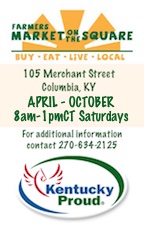


|
||||||||
|
| ||||||||||
|
Quick Links to Popular Features
Looking for a story or picture? Try our Photo Archive or our Stories Archive for all the information that's appeared on ColumbiaMagazine.com. | ||||||||||
|
Contact us: Columbia Magazine and columbiamagazine.com are published by Linda Waggener and Pen Waggener, PO Box 906, Columbia, KY 42728. Please use our contact page, or send questions about technical issues with this site to webmaster@columbiamagazine.com. All logos and trademarks used on this site are property of their respective owners. All comments remain the property and responsibility of their posters, all articles and photos remain the property of their creators, and all the rest is copyright 1995-Present by Columbia Magazine. Privacy policy: use of this site requires no sharing of information. Voluntarily shared information may be published and made available to the public on this site and/or stored electronically. Anonymous submissions will be subject to additional verification. Cookies are not required to use our site. However, if you have cookies enabled in your web browser, some of our advertisers may use cookies for interest-based advertising across multiple domains. For more information about third-party advertising, visit the NAI web privacy site.
| ||||||||||





















